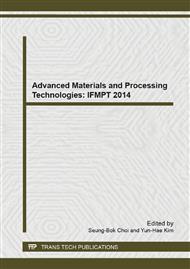p.301
p.306
p.312
p.316
p.320
p.327
p.333
p.337
p.344
Physical Properties and Antimicrobial Activity of a Poly(lactic acid)/poly(ε-caprolactone) Film Antimicrobial Coating with Chitosan
Abstract:
In this work a preliminary study on the physical properties and antimicrobial activity of environmentally friendly active films to be produced is presented. Chitosan (CH), which has antimicrobial effect on many food pathogens, was coated as antimicrobial agent into composite poly (lactic acid)/poly (ε-caprolactone)(PLA-PCL) films. Antimicrobial active films based on PLA-PCL were prepared by coating five different chitosan concentrations: 0, 2, 4, 6 and 8 %(w/w). The mechanical characterization, water vapor permeability (WVP), and antimicrobial activity of composite PLA-PCL film coating with chitosan were carried out. The mechanical characterization, water vapor permeability of composite PLA-PCL films coating with chitosan was uninfluenced. Antimicrobial activities of films were tested against Staphylococcus aurous, Escherichia coli, Bacillus subtilis, Listeria, Salmonella. The antimicrobial activity of films were significantly increase with the chitosan concentration. The results of this work suggest that chitosan coated composite PLA-PCL films have a prospectively potential in antimicrobial activity food packaging.
Info:
Periodical:
Pages:
320-323
Citation:
Online since:
February 2014
Authors:
Price:
Сopyright:
© 2014 Trans Tech Publications Ltd. All Rights Reserved
Share:
Citation:


